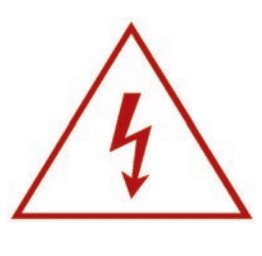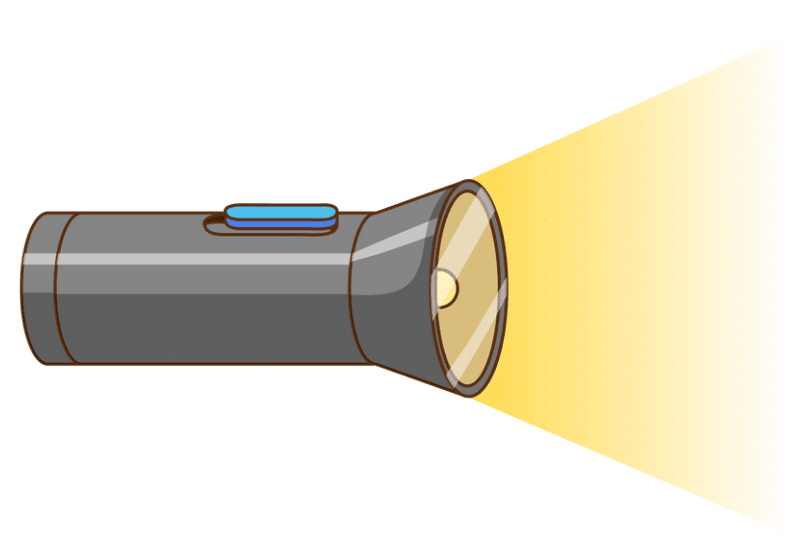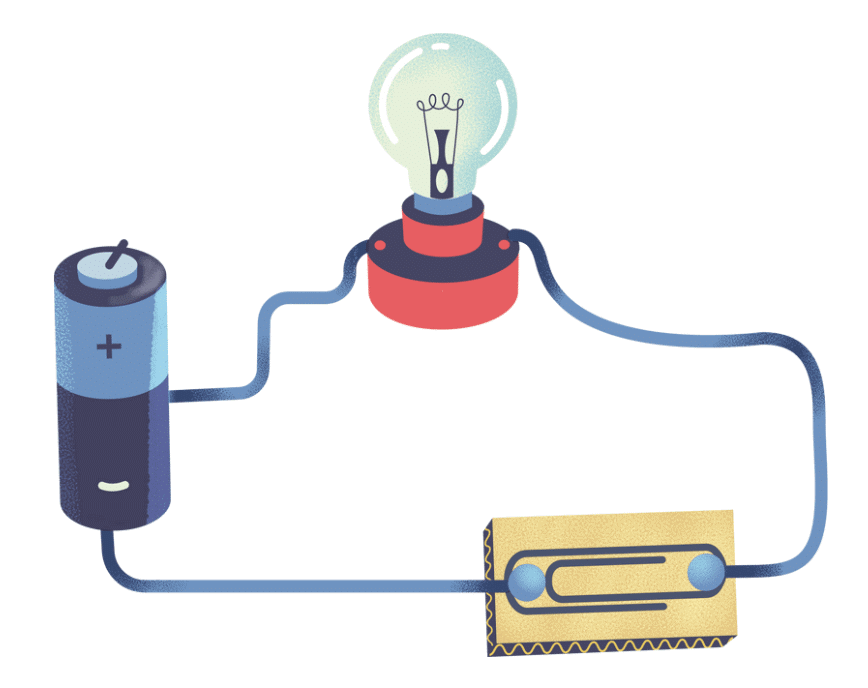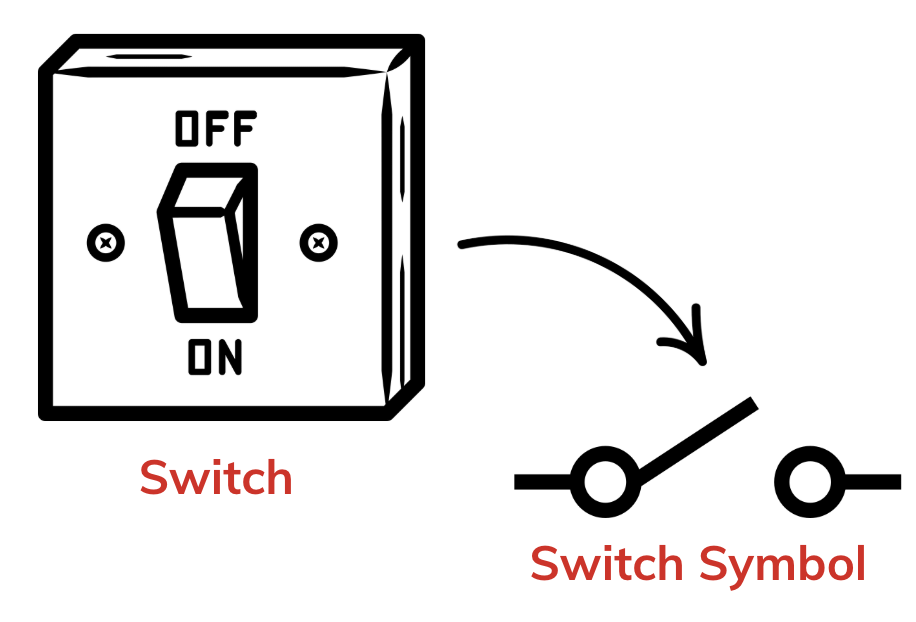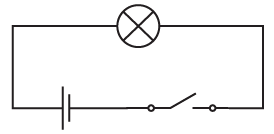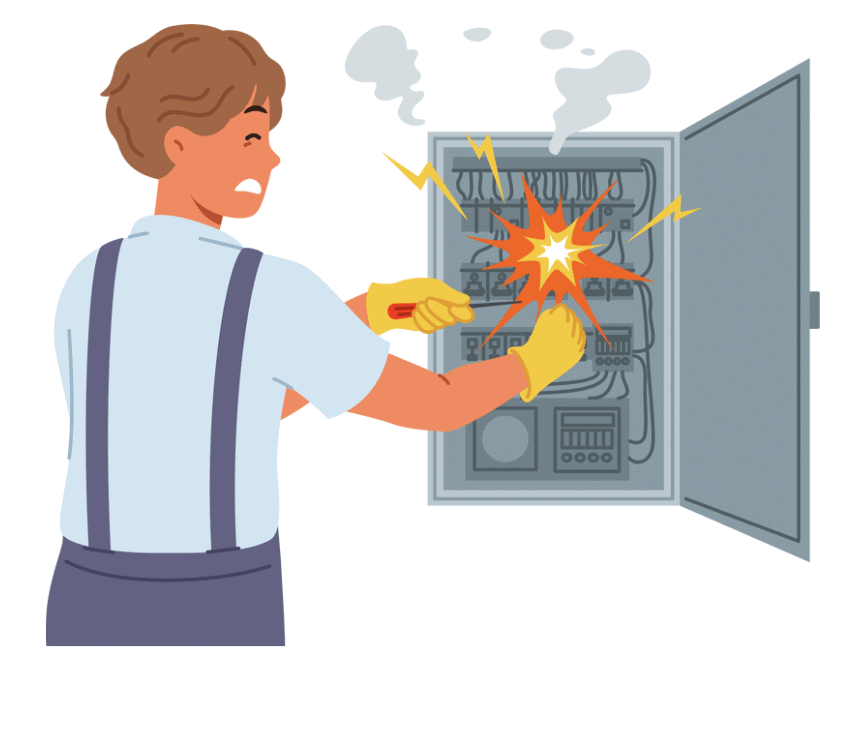Electricity: Circuits and their Components Class 7 Notes Science Chapter 3 Free PDF
Introduction
In this chapter, Nihal and his classmates are excited about their upcoming school trip to the Bhakra Nangal Dam, where they will learn how falling water is used to generate electricity at the hydroelectric power house. During the trip, they will also enjoy a scenic 13-kilometer train ride along the Sutlej river and through the Shivalik hills. Before the trip, their teacher assigns them a task to prepare a presentation on the uses of electricity. The students explore electricity’s applications in various settings—home, school, neighborhood, and city—and learn that electricity is generated from different sources, including wind, solar power, and falling water. They also realize that while electricity is essential in daily life, it must be handled carefully to avoid dangers. The chapter introduces the concept of portable sources of electricity, like batteries used in devices such as torchlights, wall clocks, and remotes.
During the trip, they will also enjoy a scenic 13-kilometer train ride along the Sutlej river and through the Shivalik hills. Before the trip, their teacher assigns them a task to prepare a presentation on the uses of electricity. The students explore electricity’s applications in various settings—home, school, neighborhood, and city—and learn that electricity is generated from different sources, including wind, solar power, and falling water. They also realize that while electricity is essential in daily life, it must be handled carefully to avoid dangers. The chapter introduces the concept of portable sources of electricity, like batteries used in devices such as torchlights, wall clocks, and remotes.Caution — The warning signs on electric poles and appliances remind us that electricity can be dangerous if not handled carefully. Never conduct experiments with the power supply at home or school. Even electricity from portable generators can pose a risk. For safe experimentation, use only batteries or cells, like those found in torchlights, wall clocks, radios, or remotes.
A Torchlight
What is a Torchlight?
A torchlight (also called a torch or flashlight) is a portable device that produces light, commonly used to see in the dark.
Components of a Torchlight:
- Lamp: The part that produces light when the torch is turned on.
- Switch: A control that turns the lamp "on" or "off". Sliding the switch to one position makes the lamp glow, and sliding it back turns it off.
- Electric Cells: Inside the torch, there are usually two or more electric cells that provide the energy to make the lamp glow.
How It Works
When the switch is in the “on” position, it connects the cells to the lamp, allowing electricity to flow and make the lamp glow. In the “off” position, the connection is broken, and the lamp stays off.
A Simple Electrical Circuit
What is an Electrical Circuit?
An electrical circuit is a complete path that allows electric current to flow from a power source (like a cell) through a device (like a lamp) and back, making the device work.
1. Electric Cell
An electric cell is a small, portable source of electrical energy, like those used in torchlights, clocks, or remotes.
1. Terminals: Every cell has two terminals:
- Positive Terminal (+): Marked with a “+” sign, usually a metal cap.
- Negative Terminal (-): Marked with a “-” sign, usually a flat metal disc.
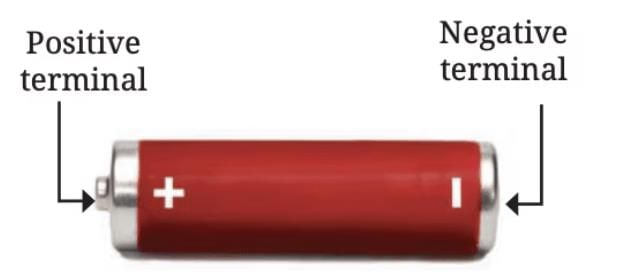
2. Function: The cell provides the energy needed to make devices work by allowing current to flow from the positive to the negative terminal.
2. Battery
A battery is a combination of two or more electric cells connected together to provide more energy or last longer.
- Connection: In a battery, the positive terminal of one cell is connected to the negative terminal of the next cell, forming a chain. This forms battery.
 Battery made up of (a) two cells (b) four cells
Battery made up of (a) two cells (b) four cells - Example: In a torch, two cells are placed so the positive terminal of one touches the negative terminal of the other, making the lamp glow when connected properly.
Fascinating Fact
The term “battery” is often used for a single cell, like the one in a mobile phone, even though it’s technically one cell.
Electric Lamp
1. Incandescent Lamp:
- Structure: An incandescent lamp has a glass bulb with a thin wire called a filament inside, supported by two thicker wires.
- Terminals: The filament connects to two terminals—one at the metal case of the lamp’s base and one at the metal tip in the center.
- How It Works: When electric current flows through the filament, it gets hot and glows, producing light.
- Usage: Found in older torchlights, these lamps glow regardless of which terminal connects to the cell’s positive or negative terminal.
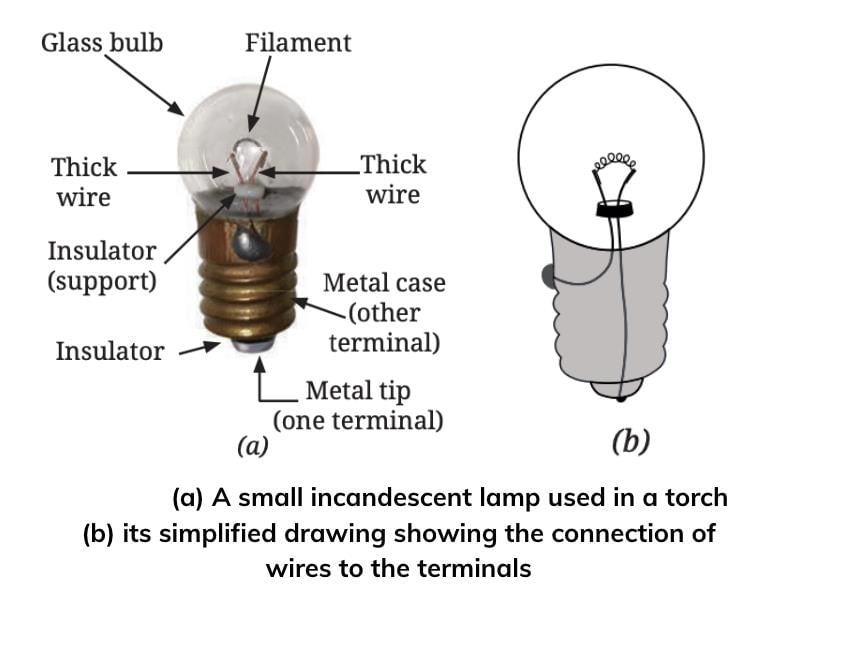
Fascinating Fact
If the filament breaks, the lamp “fuses,” stopping the current flow and preventing the lamp from glowing.
2. LED Lamp
- Structure: A Light Emitting Diode (LED) lamp has no filament. It has two wires—one longer (positive terminal) and one shorter (negative terminal).
 An LED lamp for torch
An LED lamp for torch - How It Works: LEDs glow only when connected correctly, with the positive terminal (longer wire) to the battery’s positive terminal and the negative terminal (shorter wire) to the negative terminal. Current flows in one direction only.
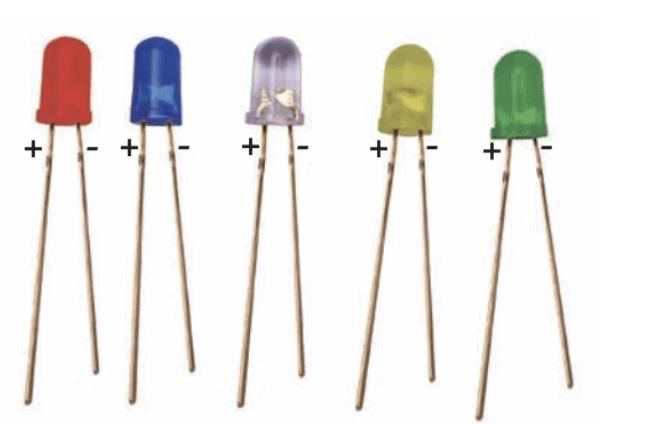 LEDs of different colours
LEDs of different colours - Usage: Many modern torchlights use LEDs because they are efficient and long-lasting.
Making an Electric Lamp Glow Using an Electric Cell or Battery:
To make an electric lamp glow, we can use a simple circuit with an electric cell (or battery), an incandescent lamp, a cell holder, and some electric wires. Here’s how it works:
Electric Cell: This provides the electrical energy required to make the lamp glow. The energy comes from the chemical reaction inside the cell.
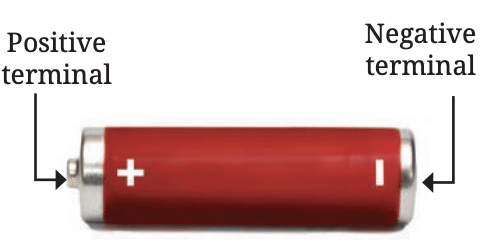
Incandescent Lamp: The lamp is a device that uses electricity to produce light. It has a filament that glows when electricity passes through it.
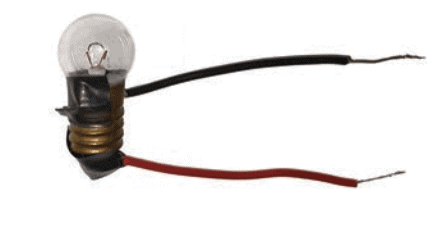
Cell Holder: A holder is used to securely place the electric cell in the circuit. It ensures the proper connection of the battery’s terminals to the wires.
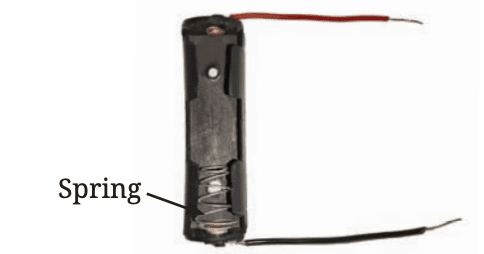
Electric Wires: Wires are used to connect the components in the circuit. The wires allow the flow of electric current from the cell to the lamp.
How the Circuit Works:
Connection: The two terminals of the electric cell are connected to the lamp through the electric wires.
Current Flow: When the circuit is complete, the electric current flows from the negative terminal of the cell, through the wires, and into the lamp. This causes the filament inside the lamp to heat up and produce light.
Prediction of Lamp Glow: Depending on how the circuit is set up, the lamp may or may not glow. If the circuit is properly connected (with all components in place), the lamp will glow. Otherwise, it will not light up.
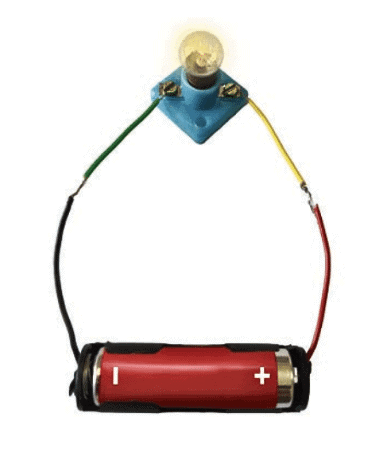
Electrical Circuit
A circuit is a closed loop that allows current to flow from the positive terminal of a cell, through a device (like a lamp), and back to the negative terminal.
- Current Flow: Electric current is considered to flow from the positive to the negative terminal of the cell.
- Incandescent Lamp: Glows when the circuit is complete, regardless of terminal connections.
- LED: Glows only when terminals are correctly aligned with the battery’s terminals.
Electric Switch
A switch is a device that controls the flow of current by completing (closing) or breaking (opening) a circuit.
How It Works:
1. ON Position: The switch closes the circuit, allowing current to flow, making the lamp glow.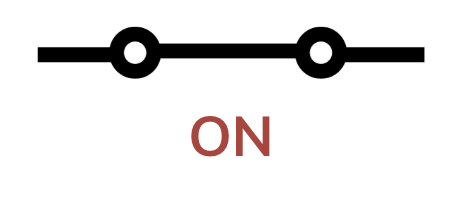
2. OFF Position: The switch opens the circuit, stopping the current, so the lamp doesn’t glow.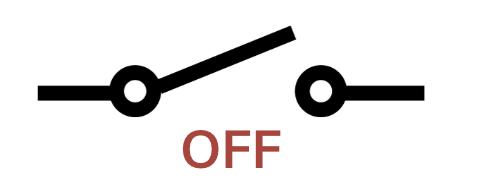
Placement: A switch can be placed anywhere in the circuit and still control the current flow.
- Example: In a torch, sliding the switch to “on” completes the circuit, and sliding it to “off” breaks it.
- Real-Life Switches: Home switches for lights work similarly but are designed differently for safety and convenience.
Circuit Diagrams
What is a Circuit Diagram?
A circuit diagram is a drawing that uses standard symbols to represent the components of an electrical circuit, making it easy to understand how the circuit is built.
Symbols for Components:
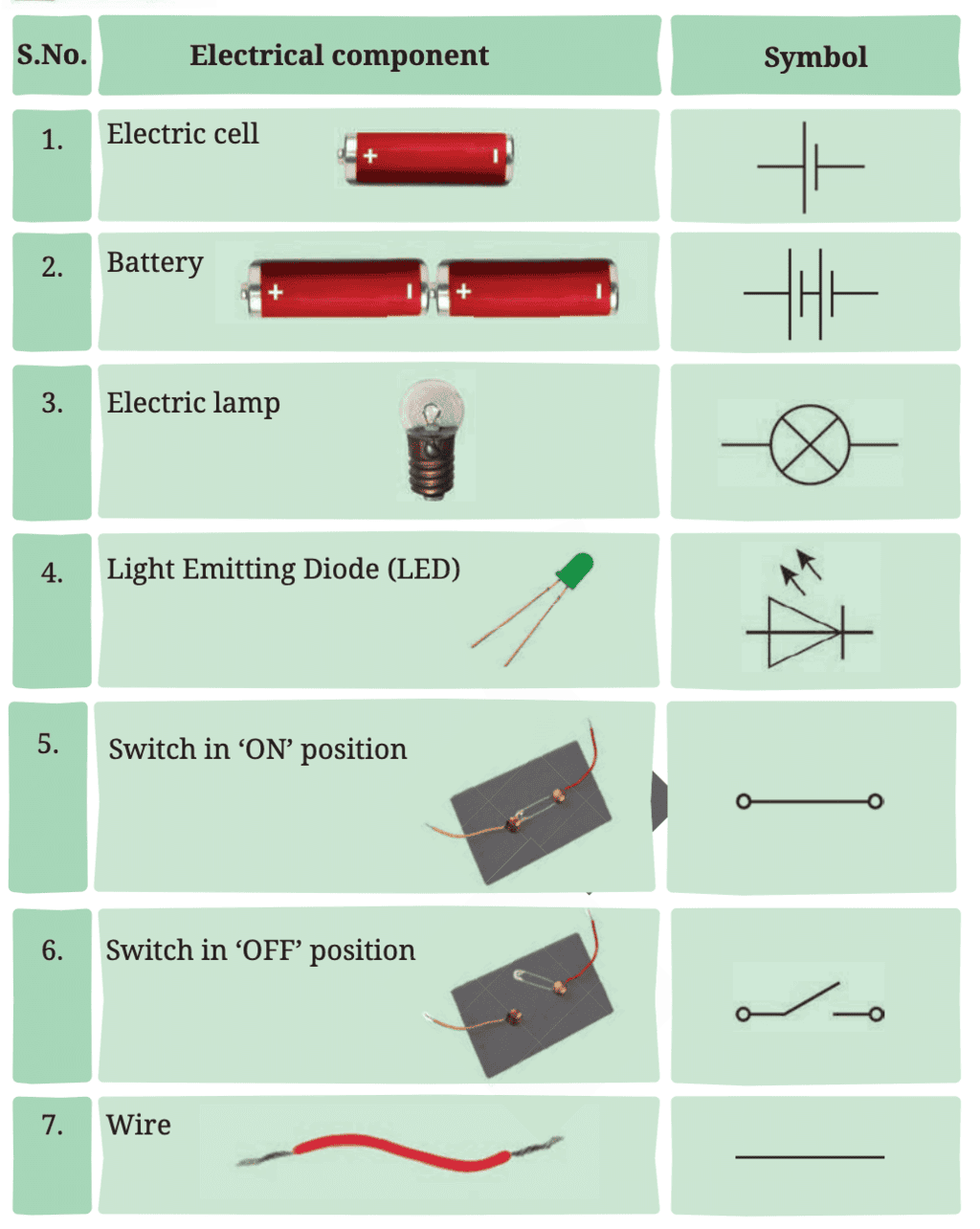 Electrical components and their symbols
Electrical components and their symbols
Purpose
Circuit diagrams simplify complex circuits, making them easier to draw and understand.
Dive Deeper - Standardization
International organizations like the International Electrotechnical Commission (IEC), American National Standards Institute (ANSI), and the Institute of Electrical and Electronics Engineers (IEEE) create standard symbols used worldwide, ensuring everyone understands the same diagrams.
Electrical Conductors and Insulators
Materials are classified based on whether they allow electric current to flow through them.
Conductors
Materials that allow electric current to flow easily are called conductors or good conductors of electricity.
- Examples: Metals like copper, silver, gold, aluminum, and objects like keys, coins, and sewing needles.
- Use in Circuits: Conductors, especially copper, are used for wires because they allow current to flow efficiently.
Dive Deeper - Best Conductors:
Silver, copper, and gold are the best conductors, but copper is used most often due to its lower cost and availability.
Insulators
Materials that do not allow electric current to flow are called insulators or poor conductors of electricity.
- Examples: Plastic, rubber, glass, wood, cork, paper, wax, ceramics, and objects like plastic scales, erasers, and candles.
- Use in Circuits: Insulators are used to cover wires, make plug tops, and switches to prevent electric shocks and ensure safety.
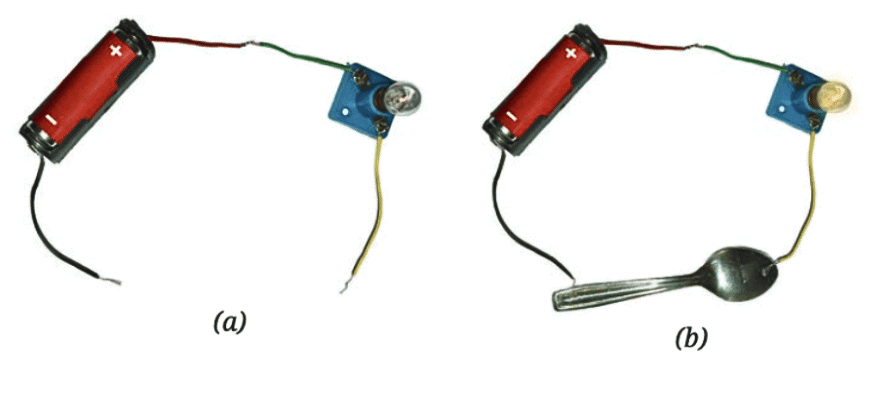 (a) Conduction tester (b) Using the conduction tester for testing a materialHere are the results of testing materials for electrical conductivity:
(a) Conduction tester (b) Using the conduction tester for testing a materialHere are the results of testing materials for electrical conductivity: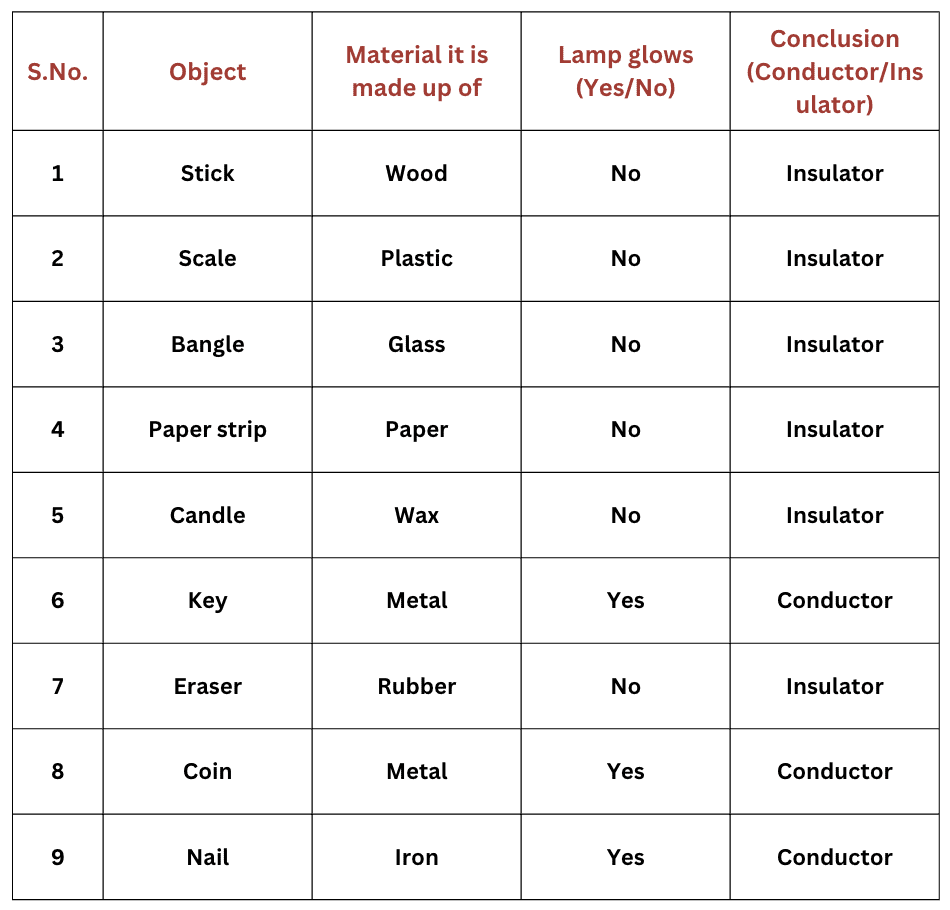
Importance of Both:
- Conductors: Used in wires, switches, plugs, and sockets to carry current.
- Insulators: Protect users from electric shocks by covering conductive parts.
Caution: The human body is a conductor, so electric current passing through it can cause severe injury or death. Never touch switches or plugs with wet hands, use devices in wet areas, or handle damaged electrical equipment.
Dive Deeper - Types of Electricity:
- Direct Current (DC): Produced by batteries, used in small devices like torchlights and phones.
- Alternating Current (AC): Supplied from power plants to wall sockets, used for larger appliances.
Points to Remember
- An electric cell provides portable electrical energy and has a positive terminal (metal cap, +) and a negative terminal (metal disc, -).
- A battery is formed by connecting two or more cells, with the positive terminal of one cell touching the negative terminal of the next, to supply more energy or last longer.
- The term “battery” is sometimes used for a single cell, like in mobile phones.
- An incandescent lamp has a filament that glows when heated by current, connected to two terminals (metal case and tip), and glows regardless of terminal connections.
- A “fused” incandescent lamp doesn’t glow because its filament is broken, stopping current flow.
- An LED has no filament, only glows when its positive terminal (longer wire) connects to the battery’s positive terminal and negative terminal (shorter wire) to the negative terminal, as current flows in one direction.
- A switch completes (ON) or breaks (OFF) a circuit, controlling current flow, and can be placed anywhere in the circuit.
- An electrical circuit is a closed path for current, flowing from the positive to the negative terminal of a cell, making devices like lamps glow.
- Circuit diagrams use standard symbols (e.g., long/short lines for cell terminals, triangle for LED) set by organizations like IEC, ANSI, and IEEE, making circuits easy to understand globally.
- Conductors (e.g., copper, silver) allow current to flow and are used for wires, while insulators (e.g., plastic, rubber) block current and are used for safety coverings.
- Copper is widely used for wires due to its good conductivity, lower cost, and abundant supply compared to silver or gold.
- The human body conducts electricity, so handling electrical devices unsafely (e.g., with wet hands) can cause injury or death.
- Battery-powered devices use Direct Current (DC), while wall sockets supply Alternating Current (AC) for larger appliances.
Difficult Words and Their Meanings
- Electricity: A form of energy that powers devices, like lights or fans, by flowing through wires or circuits.
- Circuit: A complete path that allows electric current to flow from a power source (like a cell) through a device and back.
- Electric Cell: A small, portable device that produces electrical energy, with positive and negative terminals, used in torchlights or remotes.
- Battery: Two or more electric cells connected together to provide more energy or last longer.
- Terminal: The ends of a cell or device (positive or negative) where current enters or leaves.
- Incandescent Lamp: A light bulb with a filament that glows when heated by electric current, used in older torchlights.
- Filament: A thin wire inside an incandescent lamp that glows to produce light when current passes through it.
- LED (Light Emitting Diode): A modern lamp that glows when current flows in one direction, with no filament, used in many torchlights.
- Switch: A device that controls current by opening (stopping) or closing (allowing) a circuit.
- Conductor: A material, like metal, that allows electric current to flow easily, used for wires.
- Insulator: A material, like plastic or rubber, that blocks electric current, used to cover wires for safety.
- Circuit Diagram: A drawing using standard symbols to show how electrical components are connected in a circuit.
FAQs on Electricity: Circuits and their Components Class 7 Notes Science Chapter 3 Free PDF
| 1. What is an electric circuit and how does it work? |  |
| 2. What are the main components of an electric circuit? |  |
| 3. What is the difference between series and parallel circuits? |  |
| 4. How can we measure electric current in a circuit? |  |
| 5. What safety precautions should be taken when working with electricity? |  |


